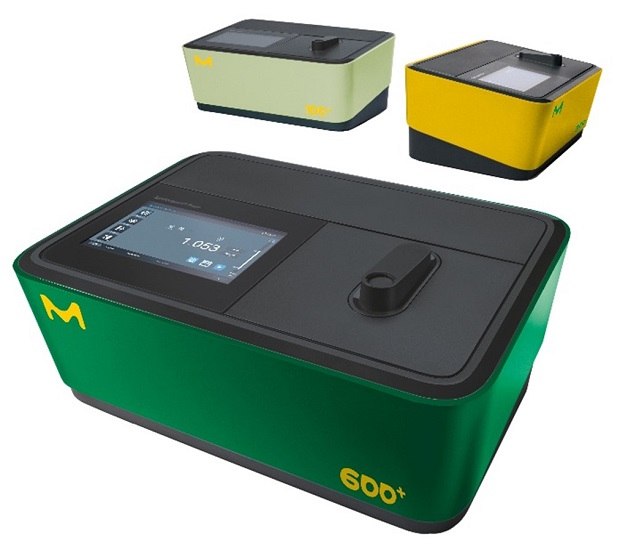Photometric Determination of Nitrite in Compost by the Griess Method Subsequent to Extraction with a Calcium Chloride Solution
Abstract
This protocol outlines the photometric determination of nitrite ion concentration in compost samples by the Griess Method using Spectroquant® test kits. Following an extraction of nitrite ions with a calcium chloride solution, the procedure utilizes a spectrophotometer to measure the nitrite content, ensuring precise results.
Section Overview:

Spectroquant® spectrophotometers - Prove 100 plus, Prove 300 plus, & Prove 600 plus
Introduction
Nitrite is an anion with the formula NO2- and a rich source of nitrogen found in soil, for plants. In the intermediate step of nitrification, ammonia (NH3) is aerobically oxidized first to nitrites1. Nitrites are found in composts matured to be used to improve crop yield in agricultural fields. It has been studied that nitrites get accumulated in composts after the exudence of ammonia, when only ammonia-oxidizing bacteria get proliferated, with the natural eradication of nitrite oxidizing bacteria (NOB)2. Nitrite accumulation leads to nitrous oxide (N2O), a greenhouse gas3 emitted by soil. It is important to analyze composts for nitrite, to mitigate nitrite accumulation and their role in the consequential impact on the environment.
This application note details the photometric determination of nitrite in compost using the Griess method, after extraction with a calcium chloride solution.
Reagents, Instruments and Materials
Nitrite Test Kits & Reagents
For the measurement, one of the following Spectroquant® test kits is necessary:
Instrument(s) & Devices
For the measurement, one of the following Spectroquant® photometers is necessary:
- Spectroquant® VIS Spectrophotometer Prove 100 Plus (1.73026)
- Spectroquant® UV/VIS Spectrophotometer Prove 300 Plus (1.73027)
- Spectroquant® UV/VIS Spectrophotometer Prove 600 Plus (1.73028)
- Spectroquant® Colorimeter Move 100 (1.73632)
Also, legacy systems
- Spectroquant® Spectrophotometer Prove 100/300/600
- Spectroquant® Photometer NOVA 30/60/60A
Software for Data transfer
- Optional Spectroquant® Prove Connect to LIMS software package (Y.11086) to transfer your data into an existing LIMS system.
Instrument Accessories
- Rectangular cells 10 mm (1.14946) and/or
- Rectangular cells 20 mm (1.14947) and/or
- Rectangular cells 50 mm (1.14944)
Other Reagents and Accessories
- Calcium chloride dihydrate for analysis (1.02382)
- Water for analysis (1.16754)
- Charcoal activated for soil tests
Experimental Procedure
Reagent Preparation
- Calcium chloride solution, 0.025 mol/L: Dissolve 3.68 g of calcium chloride dihydrate for analysis with 1 L of water for analysis.
Sample Preparation
- In a glass bottle mix 50 g of naturally moist sample, free from coarse stones, with 100 mL of a calcium chloride solution 0.025 mol/L.
- Add a spatula-tip full of charcoal activated for soil tests and shake the closed bottle in a shaking machine for 1 hour (alternative stir in a beaker).
- Let the suspension settle and filter it through a folded filter.
- For determination of the water content dry a similar sample to constant weight in the drying kiln at 105 °C.
- A drying of the sample before the determination is not advisable because of the fast change in the nitrogen forms.
The analysis should take place very quickly. Storing the sample in plastic bags at room temperature changes the analysis values after a short time already
Analysis
Determine with one of the above-mentioned test kits.
Calculation
Nitrate content in mg/kg NO2-= analysis value in mg/L NO2- x 2
See more applications for photometry at Protocols and Application Notes
References
To continue reading please sign in or create an account.
Don't Have An Account?